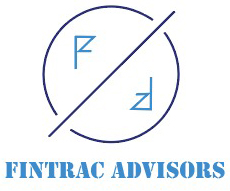Opening Up Government Assistance: Navigating Export Subsidies for Indian Companies

Vikash Kumar Surana
Vikash Kumar Surana is a Qualified Company Secretary, Associate Member of CISI UK, and Founder of THE FINOPS Services (est. 2017). With 15+ years of expertise in indirect taxation (GST, Excise, VAT, DGFT, MSME subsidies like PLI, RODTEP), he specializes in tax strategy, litigation, and compliance across industries like manufacturing, ports, steel, and healthcare.
In 2025, Indian exporters find themselves in a precarious position as a result of rising global uncertainty, tariff increases, and changing trade regulations. Although the government provides a variety of export subsidies to boost growth and competitiveness, many exporters find it difficult to take full advantage of these subsidies because of complicated eligibility restrictions, overlapping programs, and strict compliance standards. This article offers a comprehensive, up-to-date analysis of India’s major export subsidy schemes—RoDTEP, SEIS, EPCG, and TMA—and explores how exporters can optimize their benefits under each program. Additionally, this paper examines whether the information remains accurate in light of recent developments. Please give me the references and conduct a fact check as well. Exporters may enhance their international competitiveness and profitability by effectively navigating key export subsidy frameworks.
Key Export Subsidies in 2025: Updates & Eligibility
RoDTEP (Remission of Duties and Taxes on Exported Products)
- Purpose: The scheme refunds embedded taxes and duties(central, state, and local) that are not rebated under GST or other mechanisms.
- Objective:Make Indian exports competitive by ensuring zero tax burden.
- Coverage & Rates: The current coverage rate is 10,610+ tariff lines(expanded from the earlier 8,555).
- Rate Range: 0.3% to 6.3% (varies by product; some sectors like steel and chemicals have lower rates)
- Exclusions
- Products under export duty (e.g., iron ore).
- SEZ/EOU units (only DTA units were initially covered, but now SEZs are included till Dec 2025).
- Validity Period
- Domestic Tariff Area (DTA) Units: Extended till September 30, 2025.
- SEZ/EOU Units: Extended till December 31, 2025 (initially excluded but later included).
- Compliance (Annual Return Filing)
- Threshold: ₹1 crore+ claims must file an Annual RoDTEP Return (ARR) by June 30, 2025.
- Penalty: Late filing attracts interest at 15%a. under Section 28AA of the Customs Act.
- Taxes Covered Under RoDTEP:
Refunds of non-GST embedded taxes, such as
- Electricity duty
- VAT on fuel
- Mandi tax
- Coal cess
- Note: RoDTEP does not cover customs duties, GST, or corporate income taxes.
2. SEIS Status
- As part of India’s move away from direct export subsidies to conform to WTO regulations, SEIS was eliminated for exports produced on or after January 1, 2021.
- Some export incentives were superseded by the Remission of Duties and Taxes on Exported Products (RoDTEP) program, which only applies to products and excludes services.
- Since FY 2020–21, no additional SEIS benefits have been announced.
Benefits & Eligibility (When Active)
- ELIGIBILITY: Those who export services and have a minimum net foreign exchange earnings (NFE) are eligible.
- IT, healthcare, tourism, law, accountancy, R&D, and other industries were covered (not limited to businesses with <25 workers or <2 years of operation).
- BENEFIT : 3–5% of net foreign exchange earnings as a duty credit scrip, which may be used to pay customs charges and is transferable.
- Exclusion: In the same transaction, SEIS could not be claimed in conjunction with EPCG or RoDTEP (for goods).
EPCG (Export Promotion Capital Goods)
- Purpose: To permit the duty-free importation of capital items (such as machinery and equipment) for use in pre-production, production, and post-production processes.
- Objective: Lower input costs to increase manufacturing
A. Relaxations (2024–25 Updates)
The old rule was that capital items were to be installed within six months, with an additional six months permitted.
Relaxation in 2024:
- General cases: 24 months (2 years) from import.
- Large projects (refinery, power plants, etc.): 36 months (3 years).
- Note: The “six months to three years” implementation period applies only to large projects; general cases are allotted up to 24 months.
B. Compliance Reporting
- Block-wise compliance: Two 4-year blocks (a total of eight years) are used to monitor export obligations (EO).
- 50% of EO is required for the first block (years 1–4).
- Second Block (Years 5–8): 50% left.
- Only block-wise reports are needed; annual submissions are not.
C.Export Obligation (EO)
- The standard export obligation is six times the duty saved, to be fulfilled over eight years.
- MSMEs: Decreased to 75% of the standard EO (after the relaxation in 2023).
- 50% in the first four years applies to all situations, not only MSMEs.
D.Common Misconceptions
- Common Misconception: That EPCG allows a 100% duty exemption without conditions.
- Reality: Duty is deferred, not waived. If EO is unmet, full duty + interest applies.
- EO Period: Fixed at 8 years (no further extensions).
TMA (Transport and Marketing Assistance)
TMA was discontinued after March 2021 and has not been revived in subsequent Foreign Trade Policy (FTP) updates.
A. Alternative for Agri-Exporters: RoDTEP
- Since RoDTEP only addresses embedded taxes and not direct marketing or transportation subsidies, it cannot completely replace TMA.
- Alternative schemes for agri-exporters:
1.) Agriculture Export Policy (AEP) 2021-26—Focuses on infrastructure support.
2.) PMKSY (Post-Harvest Schemes)—Subsidies for logistics and cold chains.
3.) State-specific schemes (e.g., Maharashtra Agri-Export Subsidy).
Common Challenges & Solutions
CHALLENGES | SOLUTION |
1. Scheme Overlaps | – Prioritize RoDTEP for goods; alternatives for services: – EPCG (duty-free capital imports) – GST refunds – State schemes (e.g., Kerala’s IT export subsidies). |
2. Documentation Hurdles | – ERP tools are mandatory for: – Real-time GST/shipping bill reconciliation – Tracking RoDTEP/EPCG claims. – Recommended: ICEgate integration. |
3. Compliance Burdens | – Annual RoDTEP Return (ARR) required if claims >₹1 crore. – Deadline: June 30, 2025 (for FY 2024-25). – Penalty: 15% interest for delays. EPCG compliance: – 1st Block (Years 1-4): 50% export obligation – 2nd Block (Years 5-8): Remaining 50%. – No annual filings needed. |
Case Study: How a Textile Exporter Maximized Subsidies (2024 Update)
Background:
A textile exporter reportedly leveraged RoDTEP and EPCG schemes to achieve
- 5% RoDTEP benefit (₹2.1 crore annual savings)
- 18% capital cost reduction via duty-free machinery imports under EPCG
- 22% margin growth and EU market expansion
Fact-Check & 2024 Updates
- RoDTEP Claim (3.5% of FOB Value)
Verification:
- Current RoDTEP rates for textiles (Chapters 50-63) range 0.5%–4.3%, making a 3.5% claim plausible for select products like woven fabrics (HS 5208–5212).
- ₹2.1 crore savings implies ~₹60 crore annual exports (3.5% of ₹60cr = ₹2.1cr).
2024 Changes:
- Rates for cotton yarn reduced to 2.8% (DGFT Notification 19/2024). Always check the RoDTEP Calculator for updates.
- EPCG Savings (18% Capital Cost Reduction)
Verification:
- EPCG allows zero customs duty on machinery imports. For high-duty equipment (e.g., looms at 10% duty + GST), 18% savings are
2024 Rules:
- MSMEs now need to fulfill only 75% of export obligations (vs. 100% earlier).
- Compliance is block-wise (50% export target in the first 4 years).
- Results (22% Margin Increase & EU Expansion)
Evaluation:
- While subsidies improve competitiveness, EU expansion depends on
- Compliance with CBAM (carbon tax for textiles from 2025).
- Demand trends, including the EU’s declining textile imports in 2024 (as reported by Eurostat).
Conclusion
India’s export subsidies—when strategically aligned with business operations—can transform cost structures, drive profitability, and enhance global competitiveness. RoDTEP’s expanded coverage (now over 10,610 products), EPCG’s relaxed compliance (block-wise reporting and lower MSME obligations), and state-backed incentives (like Gujarat’s export grants) create a powerful toolkit for exporters.
Disclaimer
The content published on this blog is for informational purposes only. The opinions expressed here are solely those of the respective authors and do not necessarily reflect the views of Fintrac Advisors. No warranties are provided regarding the completeness, reliability, or accuracy of the information. Any action taken based on the information presented in this blog is strictly at your own risk, and we will not be liable for any losses or damages resulting from its use. It is recommended that professional expertise be sought for such matters. External links on our blog may direct users to third-party sites beyond our control. We do not take responsibility for their nature, content, or availability.


